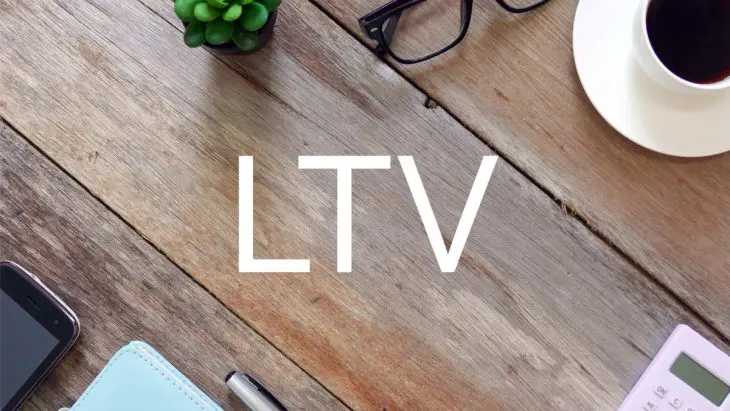Cryptocurrency is upending every angle of traditional finance—most notably the world of lending. In traditional lending, loan-to-value (LTV) ratios are used to determine the level of risk associated with a loan.
A typical scenario in traditional lending sees a buyer seek out a loan to buy a house. The house costs $400,000, but after a 20% down payment of $80,000, the buyer needs $320,000 more. Since the house’s appraised value stands at $400,000, the lender will loan the remainder at an 80% LTV.
The higher the LTV, the riskier the loan. From the lender’s perspective, the more you need to borrow, the higher the chances you won’t be able to pay it back. If you can’t pay the loan back, the lender liquidates the underlying asset (your home) to recover the owed money.
Cryptocurrency loans, however, don’t operate by the same rules. Traditional loans require credit and employment checks, whereas cryptocurrency loans generally do not. The primary determining approval factor is the LTV ratio of the crypto assets you put up as collateral.
That may seem a bit complex, but we’ll break down a few key concepts in this article to help you understand.
How to Calculate Your LTV Ratio
To calculate LTV, you divide the dollar amount you’re borrowing by the collateral’s value. The number you get at the end is then represented as a percentage.
Imagine you want to buy a home that costs $400,000. You make a 20% down payment of $80,000, meaning you have $320,000 left to pay. Since you don’t have that amount on hand, you apply for a mortgage loan. A lender will use a loan-to-value ratio to determine the amount of risk involved in giving you a loan.
Using the above example, we’ll divide $320,000 by $400,000 to arrive at 0.8, which we’ll express as 80%.
Again, the higher your LTV, the higher your perceived risk, and the higher your interest rates may be. Many lenders set a threshold well below the 80% mark to protect themselves and avoid high-risk lending.
A cryptocurrency loan works by similar principles. Say you want to take out a loan of $50,000. Most crypto lenders won’t loan above a 50% LTV, so we’ll use a 50% LTV ratio as a starting point for our hypothetical loan.
In this case, we’re borrowing $50,000, so to achieve a 50% LTV, we’ll need to have underlying crypto assets worth $100,000. Following our formula, we divide $50,000 by $100,000 to get a result of 0.5, which we express as 50%.
The lower your LTV, the better the interest rate you can expect because your loan is perceived by the lender as less risky. The big advantage to a cryptocurrency loan is that you don’t need to jump through the usual hoops to get a traditional bank loan if you possess cryptocurrency assets.
However, one thing to remember is that cryptocurrency values are volatile. That’s why most crypto loan companies don’t loan above a 50% LTV. If they did, even a slight fall in crypto prices would result in a wave of loan liquidations. An easy way to understand this point is that as crypto prices rise, your LTV goes down, but as crypto prices fall, your LTV goes up.
Why Your LTV Ratio is Important
Your LTV ratio is important for one major reason. The lower it is, the less risky your loan is for the lender (and you), and the better your interest rates will be.
Riskier loans always incur higher interest rates because lenders need to cover themselves in the event the borrower defaults on the loan. Lower LTV ratios are safer plays because the collateral backing them is generally enough to recoup any financial losses in default.
Because of market volatility, your LTV ratio is susceptible to fluctuations in value. If your LTV ratio begins to rise on a crypto loan, you can add more collateral to drive the ratio down. That’s a critical move to make under certain conditions because it may be the difference between maintaining your collateral and losing it altogether.
What Does Maximum LTV Mean?
When shopping for cryptocurrency loans, you’ll notice that there is a range of LTV percentages a lender is willing to loan at. Inevitably, you’ll also find a cap on that range. The cap is the maximum LTV – in other words, it’s the highest LTV the lender is willing to risk.
In the traditional lending world, it isn’t too uncommon to find loans with 80% to 90% LTV. Cryptocurrency loans, in contrast, are difficult to find above the 50% LTV mark, although some firms can be found offering them up to 85%.
What is a Good LTV Ratio?
The lower your LTV ratio, the better it is. Less loan-to-value means you have more than enough collateral on hand, and that puts you in good standing with your lender.
In traditional mortgage loan scenarios, an LTV under 80% is generally regarded as acceptable. Crypto loans are different, though, because the underlying assets are more volatile. Owing to that volatility, cryptocurrency loans have a different threshold for what is considered a good LTV ratio.
In the crypto world, 50% and under is considered a good LTV ratio. If your LTV is 50%, that means you have double the loan amount in BTC, ETH, LTC, or another cryptocurrency the lender will accept as collateral.
LTV Determines Your Loan Amount & Interest Rate
Cryptocurrency lenders greatly simplify the process of getting a loan. In the absence of credit and employment checks, the only thing that matters is the value of the cryptocurrency collateral backing the loan.
Your LTV is, essentially, the only metric by which a crypto lender can determine your loan amount and interest rate. That’s what makes your LTV ratio all the more important for getting a crypto loan and keeping it in good standing.









